
Help in finding your next book: “The Literature-Map”
“Read the best books first, or you may not have a chance to read them at all”*…
(Plus- Penguin paperbacks)
A blog about anything and everything…

Help in finding your next book: “The Literature-Map”
“Read the best books first, or you may not have a chance to read them at all”*…
(Plus- Penguin paperbacks)
There are songs too sad for me to sing
to sing that is, without tearing up
and who can wait for the singer to recover
and compose themselves sufficiently to continue…
At first there was just one song I couldn’t manage
Elvis Presley’s “In the Ghetto” – I could listen
but when I tried to sing it -my throat closed
and my eyes watered – I could not perform
As years go by more songs are added to the canon
of those I cannot get through without weeping
and often I cannot listen either – are they
songs of mourning, laments, requiems
nothing so formal, but tales of the human condition
the mere brevity of which is tragedy enough,
or the near impossibility of finishing a shared life
at exactly the same moment…
Dolly Parton’s “Coat of Many Colours” might be considered
kitsch if it were not true or true enough and I weep to hear
the sweetness of her sometime collaborator
Linda Ronstadt who has lost her voice to Parkinson’s
and sings only within the loving circle of family.
The exquisitely sad songs of Charlie Dore – a woman pretending
her lover lives on the other side of the world in “Australia”
so as not to acknowledge his abandonment
– he must be sleeping while she endures the day…
The rubato moments when Patsy Cline’s rich voice
almost catches, falters, as it lays down
the tragic tales of loss, longing and betrayal
sung to cheerful melodies that belie the sentiment.
Joni Mitchell wishing for a “River” to skate away on
surely the saddest Christmas song
Billie Holiday singing “Strange Fruit”
a lump rises in my throat even as I write
and to think of all those who left us too soon
their lives driven, and driven down, by the need
to perform, entertain, be loved…
Janis Joplin, Nick Drake, Prince
John Lennon, Jim Morrison
Ian Dury who sang of “Sweet Gene Vincent”
“Young, and old, and gone…”
so many more…
These are the singers and musical moments that undo me…
I used to say that I listened to sad music when I was happy
and that happy songs could elevate my lower moods
but boundaries blur and I see poignancy everywhere
and there are songs too sad for me to sing…
© Andrew Wilson, 2025
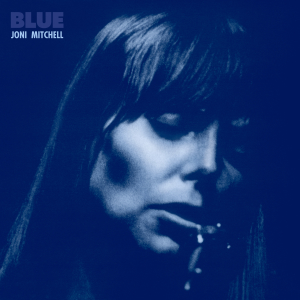
Over at dVerse Poets Pub, merrildsmith in Poetics invites us to write about music and this is also the theme for next month’s meeting of my “in the real world” local library poetry group…
Why does a Pyrrhic victory
feel like a defeat
Can peace be other than the
straightforward opposite of war
How often is a ceasefire
not the end of hostility
What might make an armistice
be the seed of new enmity
What if an enemy soldier
is often not the real enemy
If you should die for your country
is it for the regime, the people or a concept
How do you know whether
your enemy’s enemy is not your friend
If fifty-one percent of people are for a war
what about the forty-nine percent who aren’t
Can losers be
the winners of hearts and minds
Does triumph erode
the value of victory
When one rival triumphs in love
is only one heart broken
Is one man’s triumph ever
only the other man’s defeat…
© Andrew Wilson, 2025
Over at dVerse Poets Pub, merrildsmith in Poetics challenges us to write about Triumph and Defeat.
Since January this year, my friend Melissa Lemay, has been publishing her online journal Collaborature. As the name implies, it is a place for collaborative writing and other forms of creativity to thrive. You can find out more about Collaborature and how to submit work here.
Melissa also interviews some of her contributors and I was recently the subject of just such an interview. Amongst the many things we talked about, was our own collaborative project in which we are writing an epic saga called Shipmates. It was inspired by “The Golden Gate”, a novel by Vikram Seth, written entirely in sonnet form in the 1970s. He, in turn, was inspired by Pushkin’s novel “Eugene Onegin”, though I only found that out well into the project. We don’t know how far this project will carry on – it will publish in chapters, mostly around seven sonnets each, every two weeks. There follows, the first two verses of Chapter 1…

Whale Struck and Love Struck
1:1
Mid-ocean is a lonely place
But some seek there to sail
The Pacific is the greatest space
But not to run into a whale
As Kate found snoozing in her bunk
She woke to find her whole world sunk
With barely time to don Mae West
And swim out leaving all the rest
Before her precious yacht and home
Dove downwards to Pacific deep
Kate left ringed with flotsam and foam
She searches but finds nought to keep
Some way off the whale’s spout she espies
And though a tough cookie, Kate just cries…
1:2
Alas, the salt, it dries her skin
And oil it overcompensates
Causing blotches, discoloration
And what of it if true love waits
O’er yonder past the waterspout?
She thinks perhaps a whale to mount
Could be an achievable task
Should she calculate around the blast
Choose wisely time to take the reins
Lest end up shot to Port of Spain
Though, admittedly wouldn’t be so bad
A holiday in the Caribbean
Kate snaps back to reality
In just the nick of time to see…
Bradford is this year’s City of Culture and as one of the events of the festival, this morning, in time to greet the sunset, except it dawned cloudy and cooler than of late, some 300 people assembled in the quarry next to the Cow and Calf above Ilkley and on the edge of Ilkley Moor for the start of The Bradford Progress. However, far from the popular song in the title of this piece, we were treated to Handel’s ‘Eternal Source of Light Divine performed by 27 members of Paraorchestra and a Counter-Tenor, the falsetto song commanding absolute hush. Mindful that one can’t fully appreciate or be present for live a performance whilst videoing it, I took only a short sample of the performance.
Then, the Commoners Choir took over. Based in Leeds and led by Boff Whalley, former guitarist in Chumbawumba, the Leeds punk/anarchist band catapulted to unexpected fame with their chart hit “Tubthumping“, which is not a song about drinking but the resilience of the Working Class (“He gets knocked down, but he gets up again…”). I was too taken with listening to the choir harmonies this morning to really take in the lyrics but I heard a reference to Noam Chomsky…
The choir were then going to walk across Ilkley Moor to continue with a series of performances across today and tomorrow culminating in Millenium Square, Bradford.
In other news, my friend and poetry collaborator, Melissa Lemay, who runs an online Journal called Collaborature, published an interview with me that we recorded a few weeks ago. As an experiment, she recorded our Zoom call and then had the AI integrated with Zoom, transcribe it. This worked in so far as it kept track of our separate voices, and was surprisingly accurate and yet there were many misheard words that made editing quite arduous for her and she had to refer a few passages back to me for clarification. You can read the interview here.

This year my A to Z theme was to construct a memoir heading each post with a photograph of something significant from my life and tacling the memoir thematically rather than chronologically. You can find the complete list of links to the 26 posts at the end of the post.
Each time I have participated in the A to Z since my first outing in 2020, my posts have grown longer and more layered, for example, last year, I was tackling Commodities which I was afraid might be a little dry as a subject, so I decided to add a poem in an alphabetically matching poetry form. This year I was afraid that my Memoir, would not be sufficiently rivetting in itself and so I decided to lead each post with a photo of a significant object for the topic of the day. I included 10 pictures that were “Knolling” style and of course, nobody likes to be overfaced by swathes of text, and as there were several topics on some posts, that meant a lot of pictures to break it up – 169 in all! Since even my phone camera takes large pictures, each one had to be opened in Photoshop and tweaked and resized – a rod for my own back. At the time of the Theme Reveal, I only had five or six posts finished and on April 1st I had two weeks worth “in the can” but by the final weekend, I managed to complete the last 3 posts so technically, no “pantsing” it!
Since adding poetry had worked well last year, I added nine poems this year (C, E, J, L, M, O, P, T & V) too, as well as a few videos, one of me working in 1995 and a number of music videos. All of this seems to have worked and I attracted a number of regular readers to whom I am most grateful for their encouraging comments.
In no particular order:-
A shoutout to Csenge (Tarkabarka) The Multicolored Diary who was first to comment on day one and also an A to Z committee member and consummate, epic storyteller.
Anne M. Bray of Pattern Recognition an old A to Z friend – everything you ever wanted to know about Fluevog Shoes…
Tamara of Part-time Working Hockey Mom another old friend since 2020 who this year guides around the cities of Switzerland with her cutomary aplomb!
Ronel is another Comittee member and supplied the colourful graphics for the A to Z – you can find her at Ronel the Mythmaker…
Deborah A Logophile’s Ludic Musings continued her exploration of unusual and interesting words and hardly missed a post
Lisa of Tao Talk, is a friend from my other habitual haunt – dVerse Poets Pub…
Donna McNichol was another frequent flyer and her own offerings are at Just call me Froggi
Kristin Kleage has been sharing her family history with the A to Z since 2013 at Finding Eliza…
Anne E.G. Nydam is a fabulous printmaker at Black and White: Words and Pictures
Holly J. of A More Positive Perspective
Samantha of Balancing Act
Linda Curry of The Curry Apple Orchard
And so, how was the writing itself – what did I learn from doing this year’s A to Z?
Firstly, I quickly realised how much material my life contained so that for almost any given subject, I had to be very selective about which stories I included. After writing about why I didn’t become a fine-artist or an architect, and why I haven’t been very successful as a businessman, I covered my family, my late sister Carol, my Dad, my mother Elsie and shortly after, my sister Helen and particularly in these posts, there was so much more that could have been said. I was trying to stick to those points that had a bearing on me – it was my memoir after all and not theirs – still, there could be a book rather than 26 posts! But as far as it went, I feel like I have made a memoir of sorts and I am not sure I would want to go as far as a book, even if it retained and expanded on the thematic approach rather than the chronological.
Secondly, it would be disingenuous of me to think that I have had an “ordinary” life, I am well aware of the priveleges I was fortunate to be born into, by being born into a “First” World country, to middle-class parents, parents who were both extraodinary in their different ways and who did their very best to offer my sisters and I the best opportunities they could, not least of all a trip round the world and the chance to experience life in a different country at an early age. Were there any flies in the ointment, along the way, of course there were but a life without some adversity would be a life less lived and adversity makes us stronger. Would I do things differently, some I guess, but hindsight is a fine thing…
My daily routine during April, was to start the day by checking that the scheduled post was up, read it through one more time for mistakes before going over to the Official A to Z blog to answer their daily question(s) and leave a link. Because of geography and time zones, there was usually one or two posts ahead of me, with posts from the Americas coming in much later in the day and so I sometimes had the mistaken inmpression that hardly anyone else commented there so I was very touched, when after losing the run of myself and forgetting to follow my routine, I received a comment from Barbie of Crackerberries
Andrew, this is the first time I didn’t see your name above mine on the A-Z page… I had to come see if you were here because that was so odd that you were not there, even when I went back this afternoon. Thanks for sharing the X-Rays and it’s really comical to me that the new hip bone kinda looks like a serrated knife. (ahhh the imagination of writers). Anyways, I’m glad you are here and maybe just didn’t get over to the page yet. Funny how we take people for granted. See ya tomorrow and I bet you will be first with Z post.
Cheers,
Barbie
It does surprise me how few of the 172 bloggers who signed up, do comment both to respond to the day’s post as well as to see this as their firsl line of promotion. My comment made, I would post a link and a photograph from the post on my Facebook which would bring in a few friends and family. I will put this post on a button at the top of my blog in the hope that future readers will find their way to my story…
Which post did I like writing best, we are asked on the A to Z blog? Frewin, Fossils and Film covered some of my favourite things but it was also fun choosing photographs and poems to showcase for Photography and Poetry – so a toss-up there…
Lastly, it has been gratifying to find that not only was I wrong to wonder if other people would find my story interesting, but it has renewed, once again, my faith in my telling of the story, in my writing. As every one of my A to Zs has been from 2020 to 2025, it has been a marathon and I am glad to have reached the finish line, somewhat exhausted, but I am hoping that, as I am told about giving birth, the memory of the pain of labour disappears (else no woman would do it again) and that at some point in the next year, another idea for A to Z 2026, will pop into my mind, though goodness knows what…
Now that all the writing is done, I am off to catch up on some of my favourite blogs and hopefully find some new ones! You can peruse the whole A to Z list and find some for yourself here.
Elsie/Jill, Mum, Upward Mobility v. Imposter Syndrome…
Gadgets, Gardening, Geography and Geology…
Helen, the House, Health and Humanism
Ireland (They order these things differently in France!)
Music, Murals, Memories, oh, and Marmite!
Signwriting and Squidgy Things…
Travel, Tapestry and Tear-ing Up…


I confess I am not a great fan of autobiographies that begin at the beginning and follow a temporal path up to the present day – not that the person might not have some interesting stories, facts and opinions strung on their necklace, but it just doesn’t appeal as a structure. On the other hand, in my last, extra year at school in Oxford, retaking an A-level and adding a couple more, I was allowed out of school on my recognisance and saw a fascinating Exhibition at the Modern Art Gallery. The Artist had laid out and photographed every single possession of a single person – for example, all the cutlery was laid out in one shot, all the shoes in another. This more thematic approach appeals more and although I am not arranging the objects which I have chosen to tell my story in chronological order, I hope that my writing will be sufficiently interesting to keep your interest Dear Reader, and that on the journey from A to Z, you will assemble an impression of my life and who I am…

Zoom…
How many are the ways we communicate apart from face to face that is… Phone calls, texts, WhatsApp, messages, Messenger DM’s, Skype and Zoom (not an exhaustive list lol). Zoom and its brothers and sisters from Microsoft et al, came to the front duringthe Covid Lockdown when you could use it to keep in contact with friends or work from home or even have a remote consultation with your doctor. Skype – a Microsoft product was the go-to product for a long time but it is now being pulled because Zoom and it’s compadres do much more – multiple participants, recording and transcribing those recordings etc. One of my favourite things done with Skpe, was a guy who corresponded with lots of people all over the world and then edited themed conversations for the BBC on topics like work or marriage or migration. So adios Skype and welcome Zoom on which I attend a Writing Group, read poetry for the dVerse Poets Pub open mike night, not to mention work meetings, and speaking to my sister in Nova Scotia…
Which is all I have to say about Zoom, which seems a whimper rather than a bang for the ending of what has been as in depth an A to Z as any of the five before it – but at least I have written a memoir of sorts, if I do no other! At the outset, I expressed the hope that you would “assemble an impression of my life and who I am” and I hope indeed, that you have – only you know…
Adios, Amigos – see you on the road…
I leave you with a few photos of myself over the years…


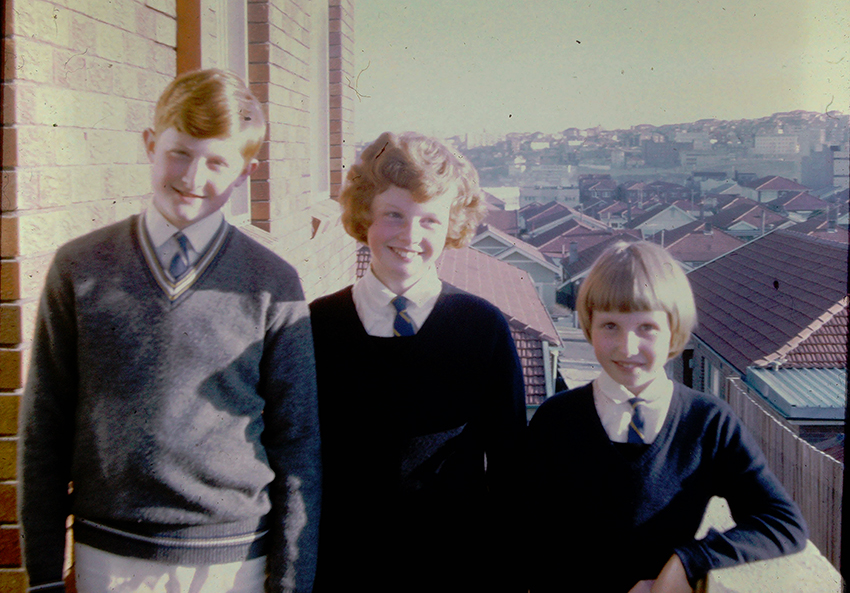


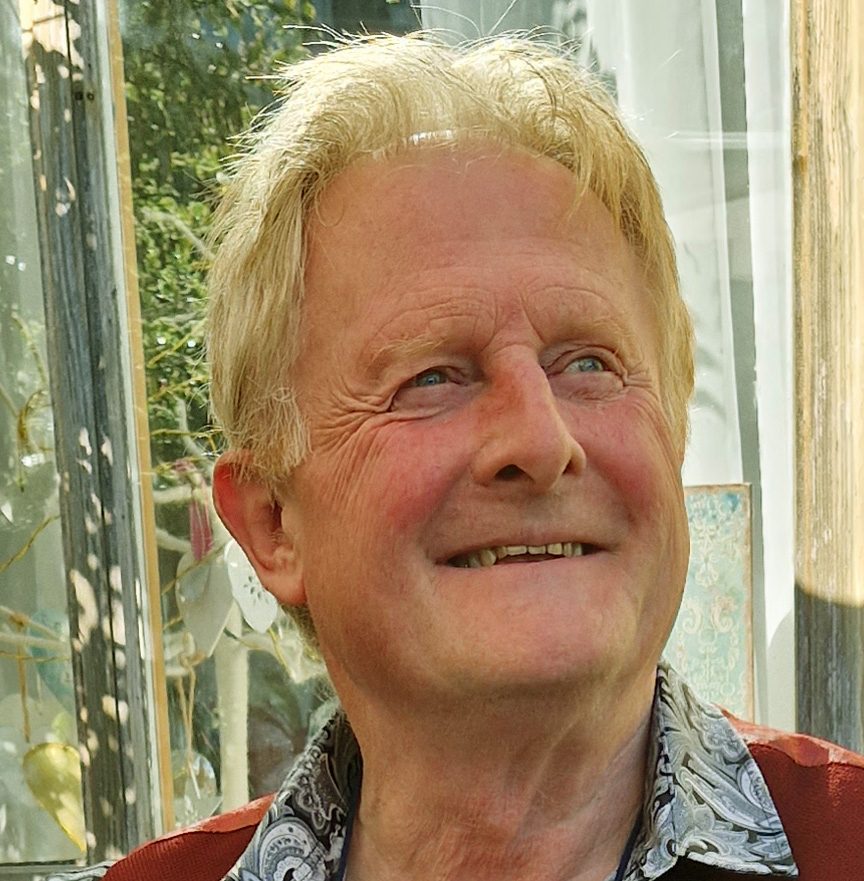

I confess I am not a great fan of autobiographies that begin at the beginning and follow a temporal path up to the present day – not that the person might not have some interesting stories, facts and opinions strung on their necklace, but it just doesn’t appeal as a structure. On the other hand, in my last, extra year at school in Oxford, retaking an A-level and adding a couple more, I was allowed out of school on my recognisance and saw a fascinating Exhibition at the Modern Art Gallery. The Artist had laid out and photographed every single possession of a single person – for example, all the cutlery was laid out in one shot, all the shoes in another. This more thematic approach appeals more and although I am not arranging the objects which I have chosen to tell my story in chronological order, I hope that my writing will be sufficiently interesting to keep your interest Dear Reader, and that on the journey from A to Z, you will assemble an impression of my life and who I am…
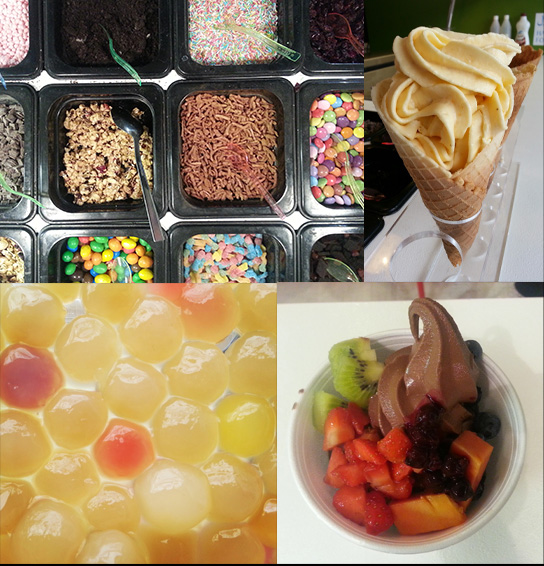
Yoghurt (frozen)
After Frewin’s closed down, I was approached by someone who wanted to open a Frozen Yoghurt/Boba Tea bar in Bradford . “What’s Boba Tea?” I asked… I never really understood until some of the supplies for making it arrived – more of that later. Once we opened, the partnership inexplicably fell apart and I was left to run the business on my own – which made it pretty much a lifestyle living.
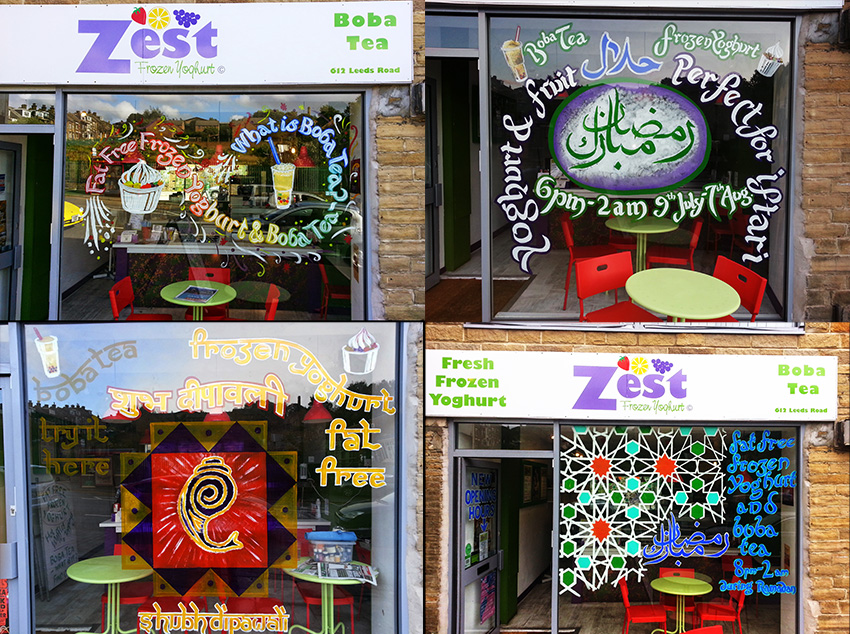
The first year, Ramadan, fell in high Summer, which meant that the predominantly Moslem population, broke their fast very late in the evening with Iftar, a small thing to eat before going to the mosque for prayers, followed by a race home to eat properly. My frozen yoghurt was perfect for Iftar and also as a desert for families’ main meals and so I was doing well enough to employ staff whilst I delivered frozen yoghurts in my car!
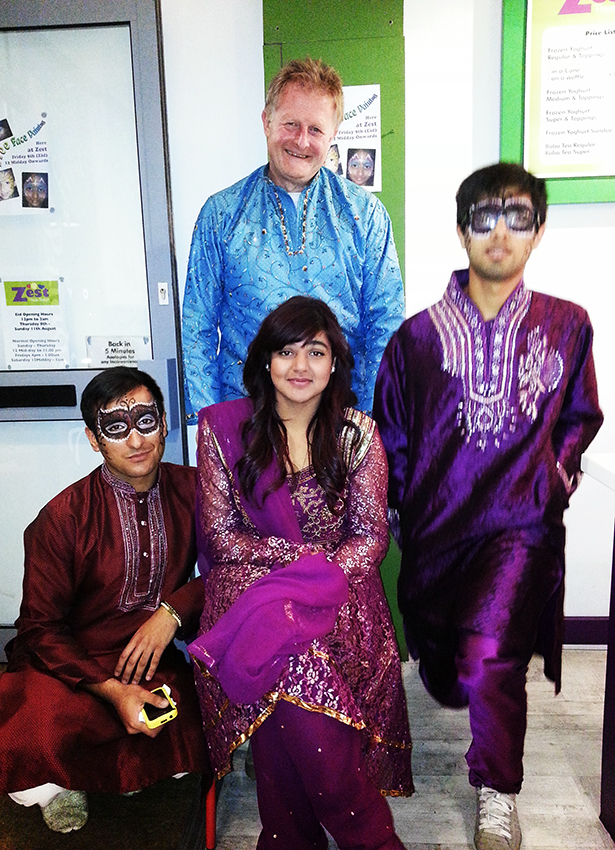
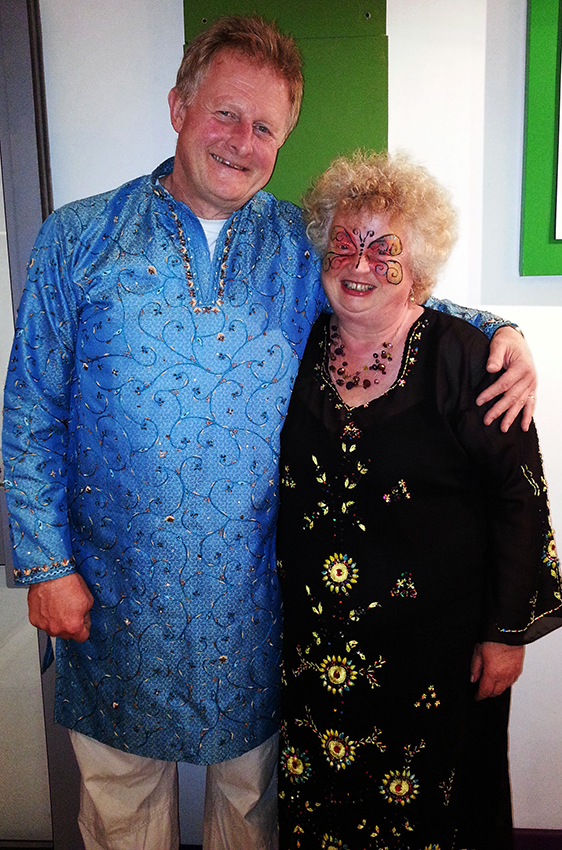
After that first Summer, business levelled off and I had only one part-time staff member in the evenings. On really quiet Winter nights, I had my trusty Ukulele out and learned a lot of new songs…


Not everything was rosy, some months in, three men ram-raided the shop in the early hours of the morning, trying to steal the icecream machine which is what makes the frozen yoghurt. Mine was a double machine (two flavours or a mixture of both) – it was so heavy that it took four body-builders to lift it onto the counter in the first place so these guys didn’t stand a chance – they got two steps and then dropped it! Meanwhile, a neighbour who had heard the crash ran downstairs, picked up a length of two-by-two and broke their car backwindow as they made their getaway! The plus side was that no publicity is bad publicity and if you search for Zezt online, the newspaper article is still there and brought in a flurry of business once the mess was cleared up…
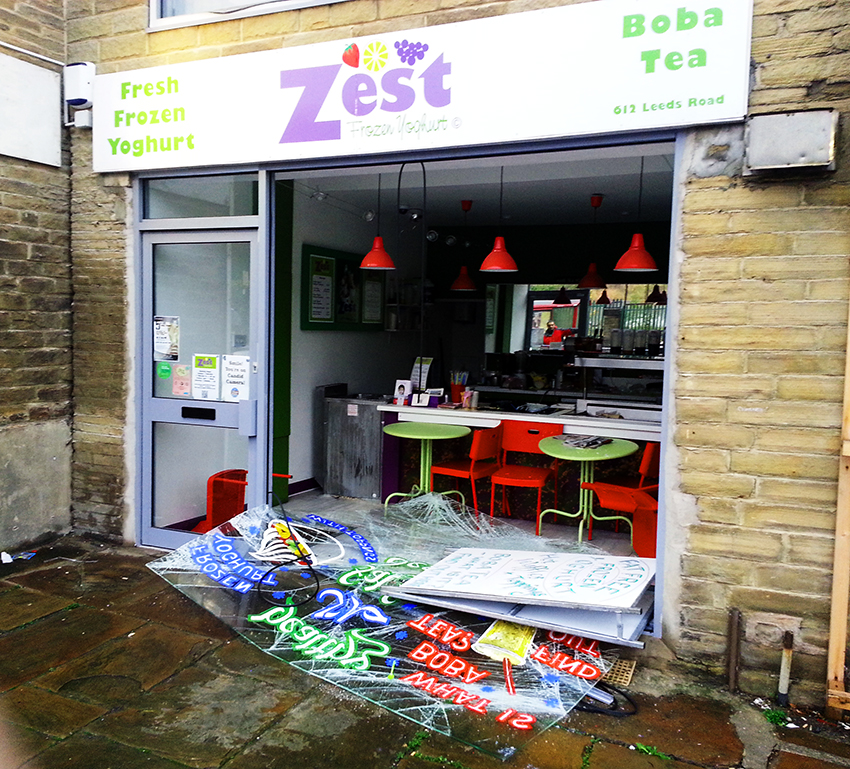
So what is Boba Tea? If you have never encountered it, it’s either a milky drink or a thin, fruity smoothie type drink which has Boba, made from tapioca, flavoured with black tea and about the size of a marrowfat pea. You drink boba tea through a very thick plastic straw and when one of the boba is sucked up, after initial resistance, it rushes up and pops into your mouth. There are many variations of boba tea, in Taiwan, the epicentre of the phenomenon, cafes often make up their own recipes from scratch, but of course, as it spread, commercial powder mixes have standardised the process. Then there are the Boba themselves, the original black tea tapioca balls have been augmented with Popping Pearls – juice-filled capsules that literally burst in your mouth; jelly in all shapes and sizes (as long as they fit up the straw).
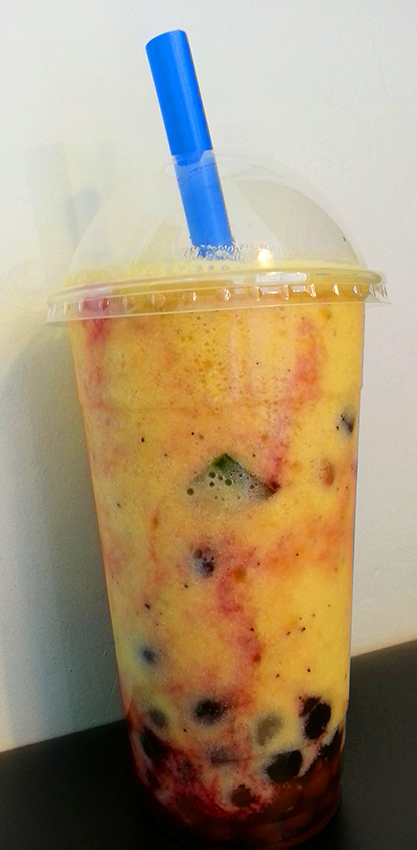
Then of course there were the customers… I grew a very happy and loyal customer base amongst whom was the group below. It’s not often that you can be witness to a moment of profound change in a person’s life, but Connie, second from left, took her friends to an evening of Asian crafts – principally Mehndi, or decorative Henna work. They came, as they did quite regularly, for a frozen yoghurt before going to the event, and for another one afterwards only this time, they had all had Mehndi decorations done on their arms. Connie was so taken with the process that she began practising it and within a year was making the pilgrimage to HennaCon in America and she has never looked back! You can find her on Istagram here.
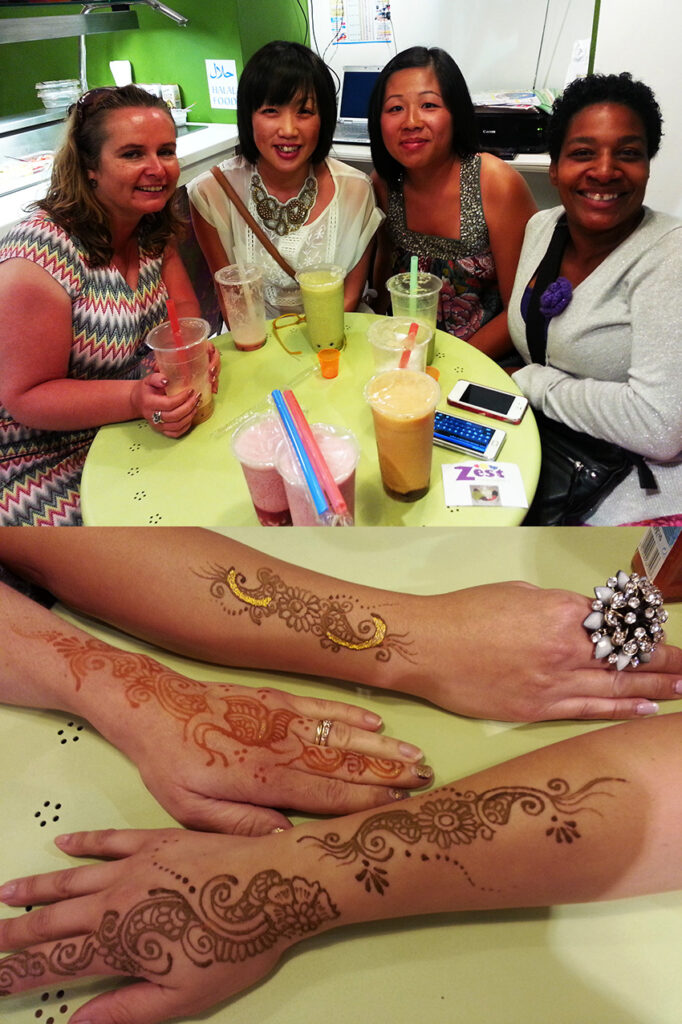
I had a little trepidation about opening Zest, a dessert shop, in that location, situated as I was between three restaurants, fearing they might resent me cutting into their trade; however, I needn’t have worried because what I came to learn is this. Molsems don’t drink alcohol and so whereas English people might go for a meal in a restaurant having mains, dessert and then more drinks and coffee – making a night of it in one establishment, Moslems may go to one restaurant for their main course, bur then to spin the evening out, they leave and go to another restaurant for their dessert – so no probs!
The shop was too small to develop and grow beyond a one-man band lifestyle choice and with only one afternoon off, midweek, I became exhausted and decided to move on to pastures unknown, but not before, unbeknownst to me, my current bosses, visited the shop and I am sure that having seen what I had managed to create on my own – that is why they offered me the job…

I confess I am not a great fan of autobiographies that begin at the beginning and follow a temporal path up to the present day – not that the person might not have some interesting stories, facts and opinions strung on their necklace, but it just doesn’t appeal as a structure. On the other hand, in my last, extra year at school in Oxford, retaking an A-level and adding a couple more, I was allowed out of school on my recognisance and saw a fascinating Exhibition at the Modern Art Gallery. The Artist had laid out and photographed every single possession of a single person – for example, all the cutlery was laid out in one shot, all the shoes in another. This more thematic approach appeals more and although I am not arranging the objects which I have chosen to tell my story in chronological order, I hope that my writing will be sufficiently interesting to keep your interest Dear Reader, and that on the journey from A to Z, you will assemble an impression of my life and who I am…
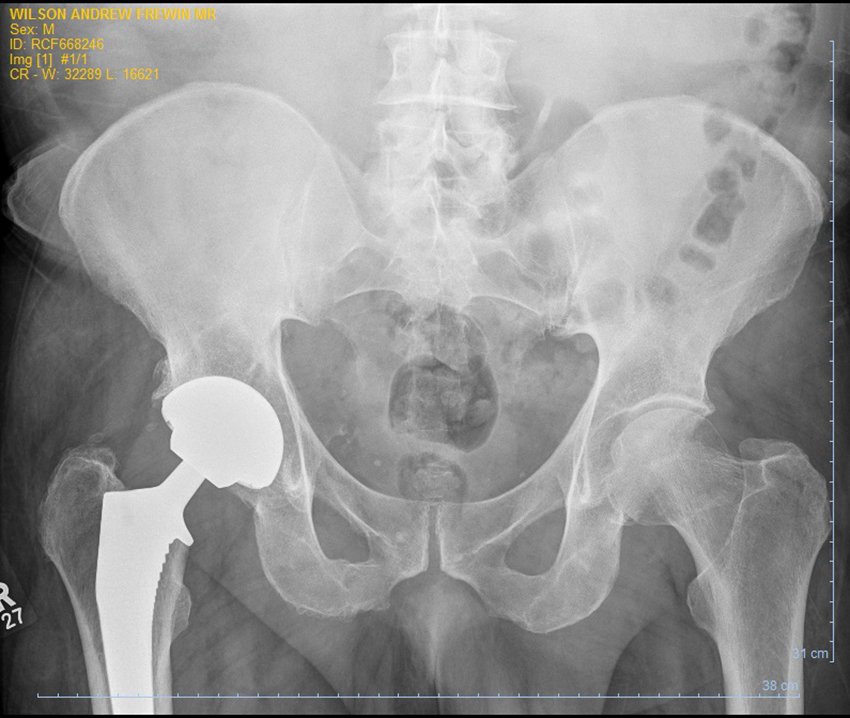
I was amazed recently, when going for a chest X-ray, and asking if it would be possible to obtain one of my X-rays (for this post), to be told that all my films were available to me free of charge and returning the next day, I was given a CD with the lot! Bravo the NHS – free at the point of delivery and fully transparent in its health records (to the individual concerned). As I described in H for Health, I broke my hip in a car accident in 1999 and then in about 2013, I needed the hip replaced and that is the metal piece you can see on the left of the X-ray. Never say I don’t share anything intimate with you!
It is amazing, is it not, that the likes of Marie Curie and her husband, should have discovered radioactivity and developed it into such a tool for our benefit – and not without personal cost to their own health…
The other type of scan, which is conducted at the same hospital, is the ultrasound (not just for goggling at babies in utero) and I recently had one of those for a suspected small kidney stone. The results below are so blurry that I am amazed that anybody can determine anything. My stepson’s girlfriend is a stenographer – not as I thought, an old-fashioned word for a secretary, but a person who conducts and interprets Ultrasound scans, and she confirmed that an MRI scan would have been much better at detecting a stone but is also much more expensive… She herself suffered from the same problem, but was able to monitor herself at work – perks of the job!
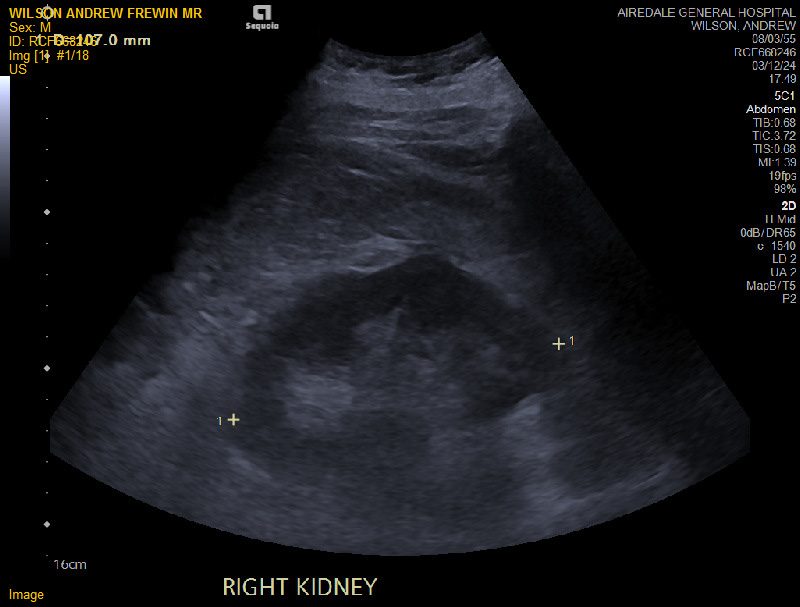

I confess I am not a great fan of autobiographies that begin at the beginning and follow a temporal path up to the present day – not that the person might not have some interesting stories, facts and opinions strung on their necklace, but it just doesn’t appeal as a structure. On the other hand, in my last, extra year at school in Oxford, retaking an A-level and adding a couple more, I was allowed out of school on my recognisance and saw a fascinating Exhibition at the Modern Art Gallery. The Artist had laid out and photographed every single possession of a single person – for example, all the cutlery was laid out in one shot, all the shoes in another. This more thematic approach appeals more and although I am not arranging the objects which I have chosen to tell my story in chronological order, I hope that my writing will be sufficiently interesting to keep your interest Dear Reader, and that on the journey from A to Z, you will assemble an impression of my life and who I am…
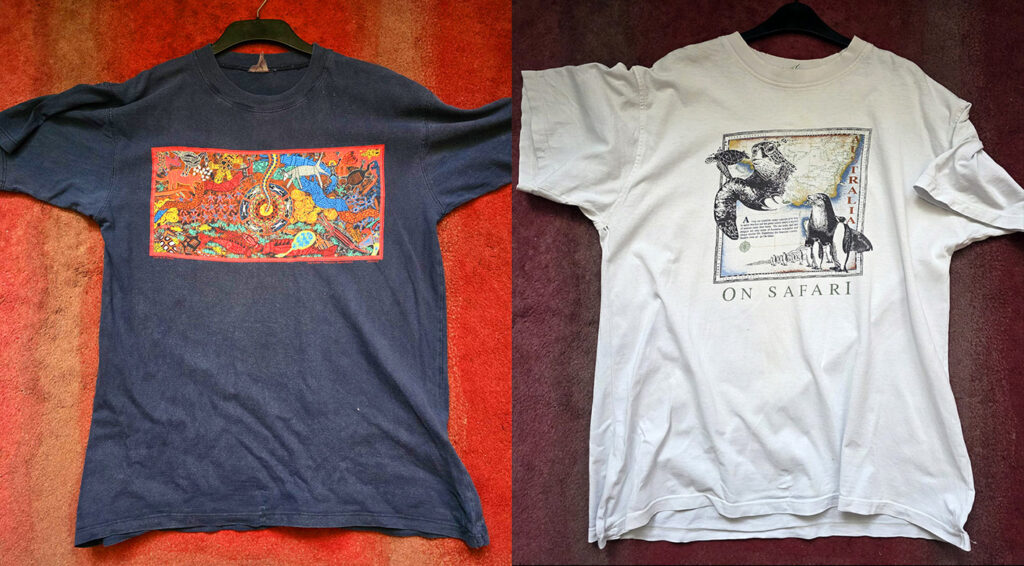
I am a keeper! No, not that sort of keeper! I keep things I like – for a long time! Its not that I’m miserly about buying new clothes, if I was rich, ! would certainly indulge in buying new clothes, though not fashionable clothes per se, but distinctive, unique clothes – but I am not, so I don’t! When I was at school, my mother bought me sturdy, sensible clothes that would last and unable to dress as fashionably as my contemporaries, I made a virtue of being unfashionable. Besides, fashionable clothes are made less well in the rush to get them out at a tempting price – even more so for ladies’ clothes. Men’s clothes are generally slightly better made and last longer accordingly… I am jealous of the flamboyance of women’s clothes vis-à-vis mens’, are we not one of the few species where men are dowdy and do not have to win our mates with a display of finery?
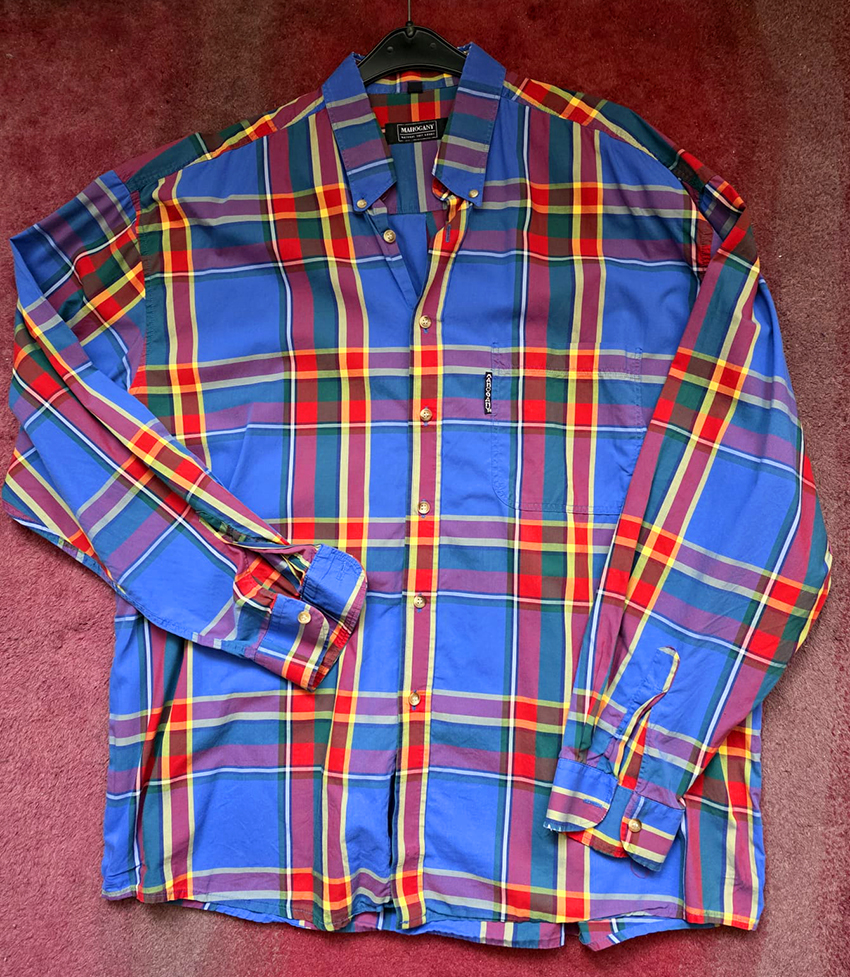
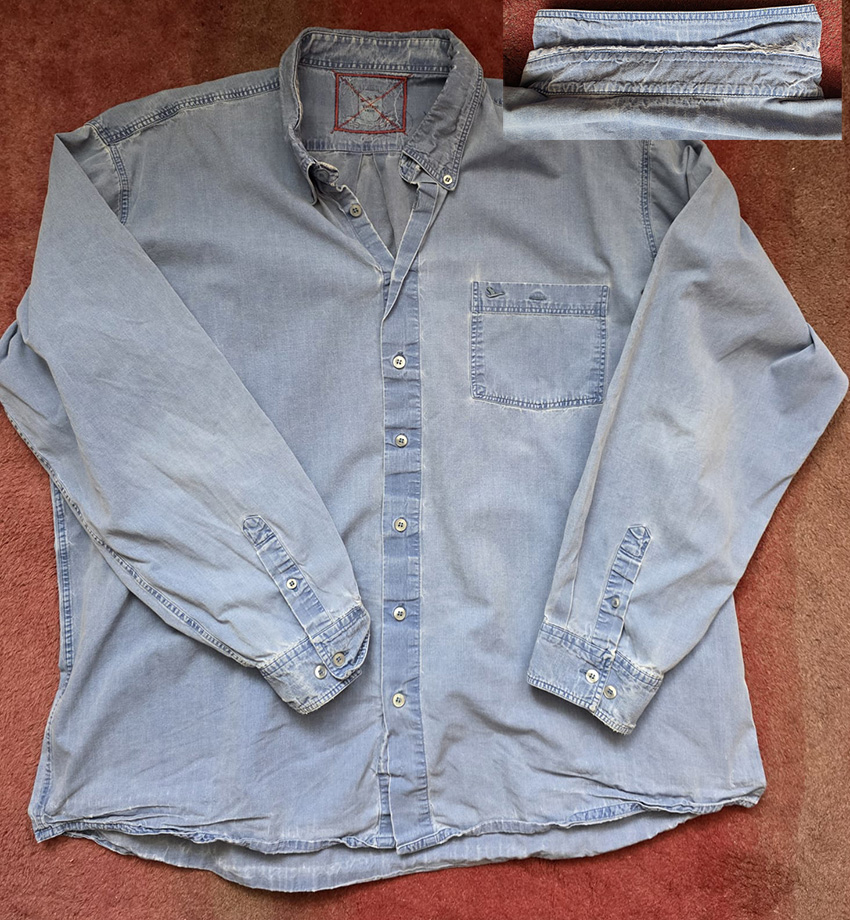
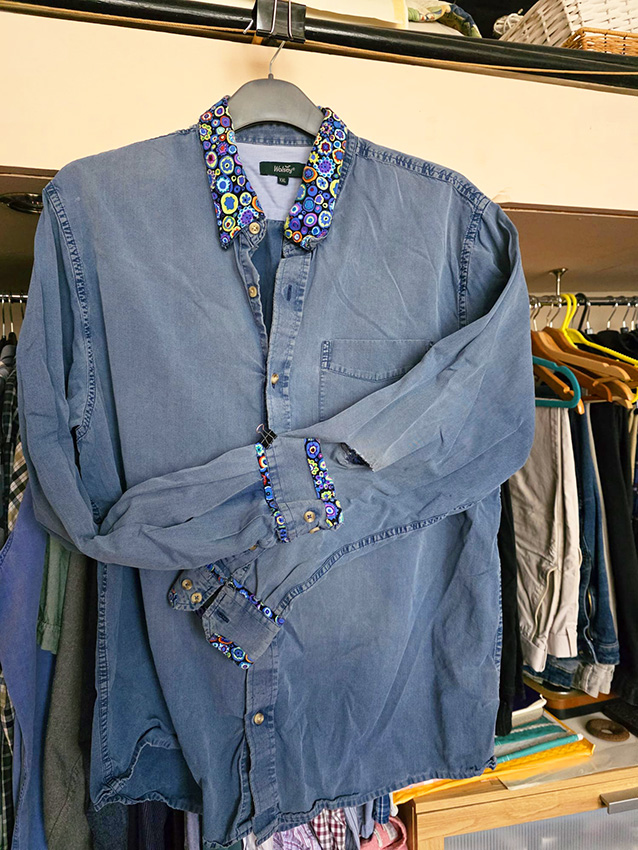
I read some tips on preserving your clothes, the most useful of which was not to wash more frequently than needed and to close all zips and main buttons when washing…
Vintage clothes have become big business, and several of my grandsons helped pay their way through university by buying individual clothes from charity shops or buying secondhand in bulk online and then reselling them online. When my partner worked in a local charity shop, she regularly used her staff discount to buy shirts for me so that it is only in recent years that I have bought the occasional brand new shirt. I also look out for shirts I could embellish with brighter fabrics – I did do an evening class in dressmaking.
Spin Cycle
Separate whites from coloureds
conventional wisdom has it
but my clothes are so old
there’s no possibility of
dye displacement
I am a keeper
– I have T-shirts
forty years old
faded a little
but not turned pink
I use conventional wisdom
when washing something new
© Andrew Wilson, 2024